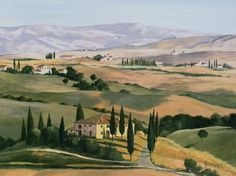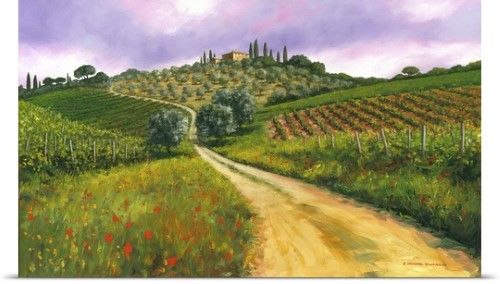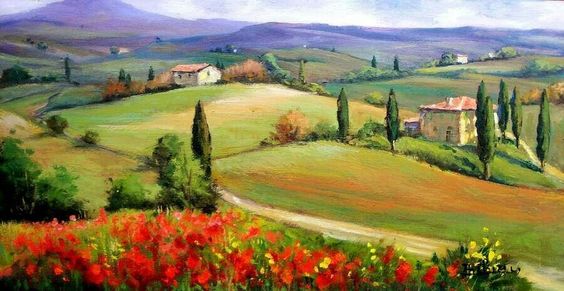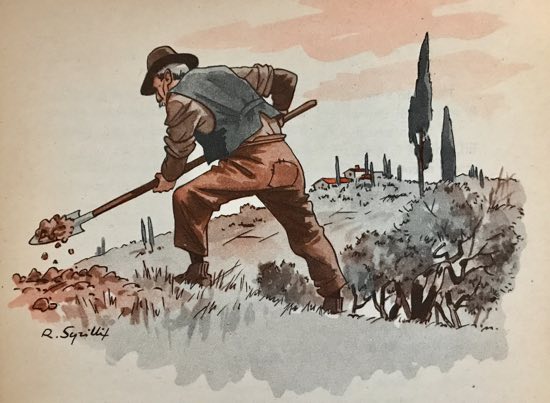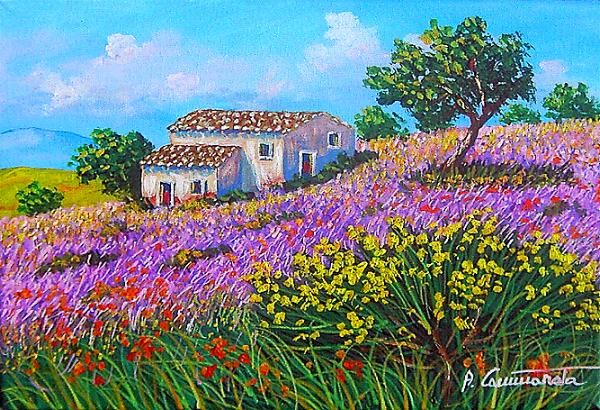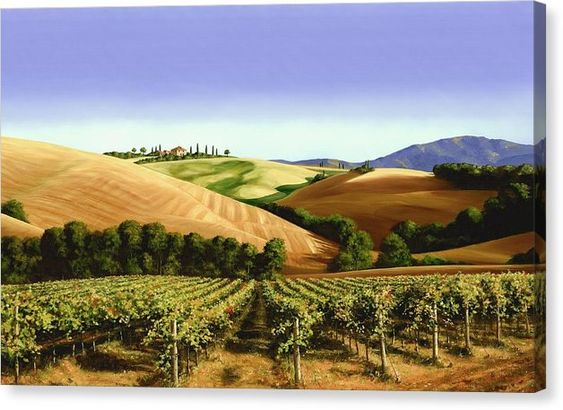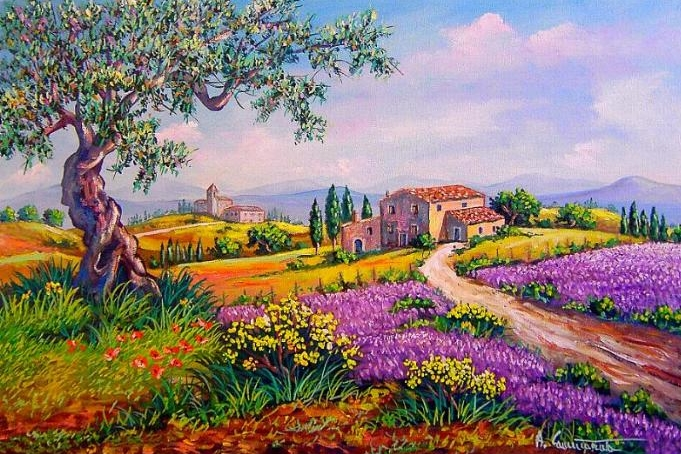The Tuscan rural landscape began to emerge after the year 1000 when the feudal system entered into crisis. This territorial organization was based on a myriad of small communities of peasants subject to the lordly powers; these had created a very simplified productive landscape, based on fields planted with cereals arranged in crown around the inhabited, with a small herd of sheep, horses and cattle. Outside these realities there were woods and marshes.
The development of the urban system, between the XII-XIV centuries, led to the disintegration of the feudal system and the birth of new territorial organizations. The bourgeoisie began to turn its attention to the land and seized vast estates; the 'sharecropper' took the field. In practice, a landowner granted to a family of peasants a 'farm', that is, a plot of land generally equipped with a house in addition to various agricultural outbuildings. Management expenses and harvests were divided in half; hence the term sharecropping. A sharecropper assumed a double responsibility: towards the owner and his own family that he should not risk starving.
From the beginning, the sharecropping was based on a short-term contract, so that the owner could get the full availability of the fund back within a few years. The extension of the farm was usually from 5 to 10 hectares.
Sharecropping was an absolute novelty. It was so solid, both legally and socially, that it was practically unchanged until the second half of the last century. Sharecropping affected about 70-80% of cultivated land; it can be said that it influenced the culture and civilization of Tuscany.
For a farm to function, its size had to be such as to fully exploit the working potential of the family and to satisfy its basic needs. In order to guarantee the farm self-sufficiency, a mixed and very varied production model was followed, which included the presence of arable land, olive groves, pastures, meadows, rows of vines, vegetable gardens and small woodland plots. Each corner had to be exploited to increase the overall yield; different species were cultivated, in the same place and at the same time, also in problematic soils.
Thanks to this approach comes the typical rural landscape, that of the 'promiscuous cultivation'; the sharecropping gives life to real environmental mosaics.
Everything was based on work combined with a deep wisdom. We followed the crop cycles imposed by the seasons and climatic conditions.
Fundamental concepts of the sharecropping world were: meticulous practices, self-production, organic fertilization, minimal waste, care and maintenance, respect for biological cycles, use of renewable resources. Streams, ditches, drainage systems, roads and paths, terraces and dry stone walls were the subject of constant care and maintenance. This went beyond the immediate needs; it was a spontaneous attitude of respect for the territory in which one lived.
The farms were often grouped into farms that formed the core of agricultural production. The farm provided the sharecroppers with the equipment, the oil mill, the mill, the vat and other essential services for the development of agricultural activity. It was an economically self-sufficient microcosm, able to satisfy all the basic needs of the people employed there. The farm became the element of control of the economic and social world of sharecropping. In many cases it also included the manor house.
Sharecropping endured for centuries and entered into crisis after the Second World War, for both economic and social reasons. The rural landscape changes, the agricultural mesh widens and becomes more uniform. There is the amalgamation of neighboring plots, eliminating hedges, rows of trees or other linear elements that were used to separate the fields. Mechanization and specialization of cultivation are affirmed. The change of the landscape is accompanied by the appearance of abandoned houses and the planting of paths and roads.
In Tuscany, between the fifties and sixties, thousands of peasant families leave the fields. Some of them buy the large estates of the great property and created the farms. Sharecropping was officially abolished by an act of Parliament in 1964.
